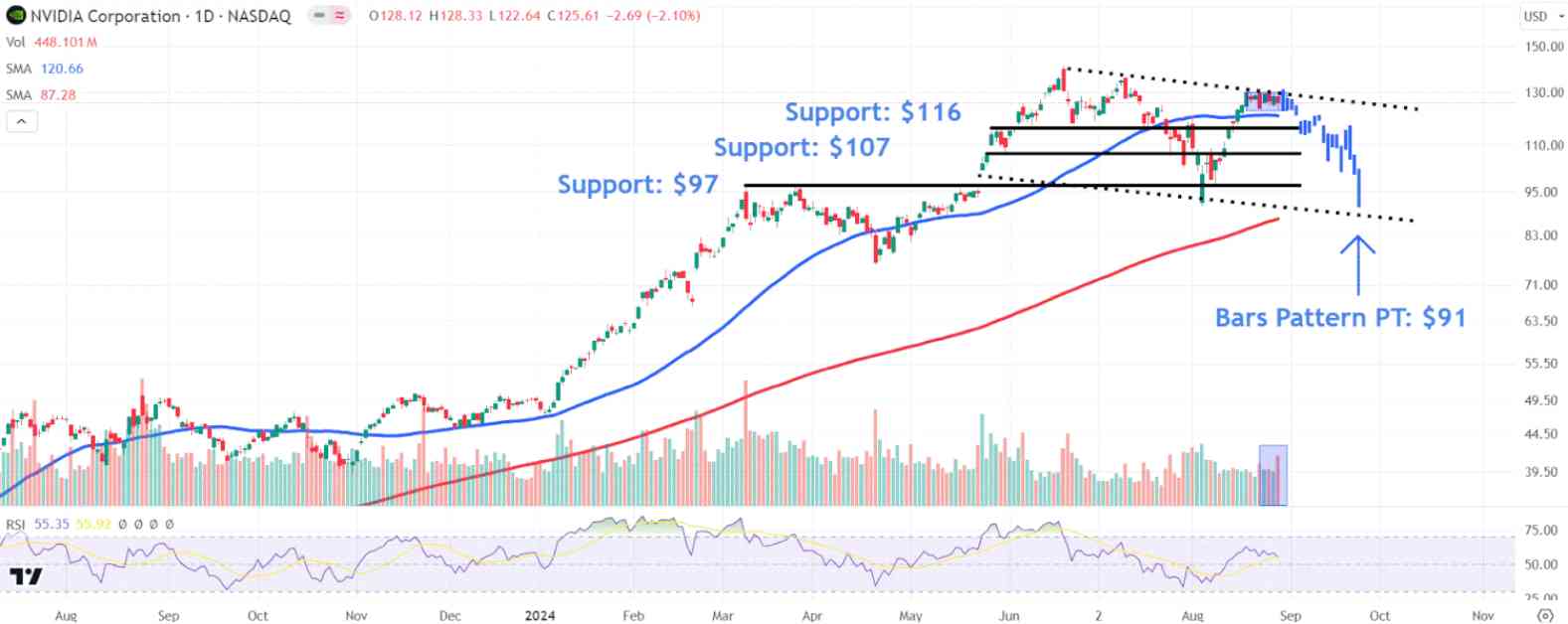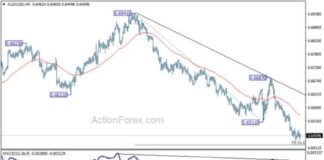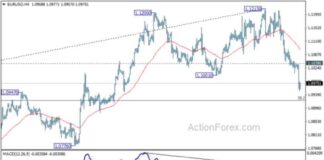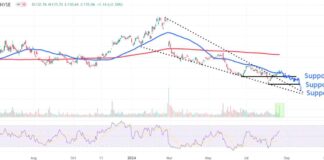Nvidia (NVDA) shares experienced a significant drop of nearly 7% in extended trading on Wednesday following the release of the company’s quarterly earnings report. While Nvidia surpassed earnings expectations, investors were left disappointed as the numbers indicated a slowdown in growth. This decline marks a notable shift for the AI darling, which had previously impressed Wall Street with stellar earnings reports driven by the high demand for artificial intelligence technology.
Despite the recent drop, Nvidia’s stock has seen remarkable growth this year, up around 150% since the beginning of the year. However, the company has also faced substantial price swings in recent months, including a 33% decline between July and August. Despite these challenges, Nvidia managed to stage a recovery leading up to the earnings report, trading just 11% below its record high as of Wednesday’s close.
In after-hours trading on Wednesday, Nvidia shares fell to $116.95, reflecting the market’s reaction to the earnings results. This drop has raised concerns among investors about the stock’s future performance and has sparked discussions about key chart levels that should be monitored in the coming days.
Projected Breakdown From Rectangle Formation
Leading up to the earnings report, Nvidia shares had been consolidating within a narrow rectangle formation for the past seven trading sessions. Although trading volume remained relatively low during this period, there was an uptick in share turnover as investors rebalanced their portfolios ahead of the earnings announcement.
The anticipated drop following the earnings release could see Nvidia’s shares breaking down below the recent rectangle formation and the 50-day moving average. This move has the potential to trigger further weakness in the stock, prompting investors to closely monitor key price levels in Nvidia shares.
Nvidia Price Levels to Watch
As Nvidia’s stock continues to experience post-earnings price movement, investors should pay attention to four crucial price levels that may come into play in the near future. The first key level to watch is around $116, where initial support may be found near a trendline connecting the May peak and a minor relief rally in early August.
If the stock falls below $116, the next area of interest is around $107, where buyers could seek entry points near a series of closely aligned trading levels between May and August. Further downward movement could lead to a retest of the $97 level, where Nvidia shares are likely to encounter significant support near twin March peaks, one of which marked a previous record high for the stock.
Lastly, investors should keep an eye on the $91 area, which represents a lower price target based on the down trending bars pattern from July to August. If this move materializes, it could confirm a descending channel in the stock and potentially lead to a retest of this month’s low.
Conclusion
In conclusion, Nvidia’s recent earnings report has sparked a significant drop in the company’s stock price, raising concerns among investors about future growth prospects. As the stock navigates post-earnings price levels, it’s essential for investors to monitor key chart levels and be prepared for potential further weakness in Nvidia shares. By staying informed and paying attention to critical price levels, investors can make more informed decisions about their investments in Nvidia.

















